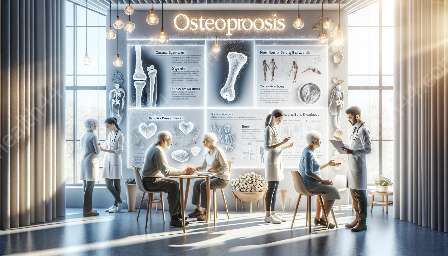Osteoporosis is a common bone disease characterized by low bone density and an increased risk of fractures. Understanding the factors influencing bone health, such as diet, exercise, and genetics, is crucial in preventing and managing osteoporosis. This comprehensive guide aims to provide a deeper insight into osteoporosis, bone density, and their impact on overall health.
Osteoporosis: A Silent Threat to Bone Health
Osteoporosis is often referred to as a 'silent disease' because it progresses without any symptoms until a fracture occurs. It weakens bones, making them fragile and more susceptible to fractures, particularly in the hip, spine, and wrist. As bone density decreases, the risk of fractures and associated complications increases.
Understanding Bone Density
Bone density refers to the amount of mineral content in bone tissue. Higher bone density indicates stronger bones and reduces the risk of fractures. Peak bone mass, typically achieved in early adulthood, plays a crucial role in determining bone density later in life. Factors such as genetics, hormonal balance, nutrition, and physical activity influence bone density.
Impact of Osteoporosis on Health Conditions
Osteoporosis can significantly impact overall health, leading to complications that extend beyond bone fractures. For instance, individuals with osteoporosis are at an increased risk of developing other musculoskeletal conditions such as kyphosis, a forward curvature of the spine. Additionally, fractures resulting from osteoporosis can lead to decreased mobility, chronic pain, and reduced quality of life.
Preventing and Managing Osteoporosis Through Lifestyle and Nutrition
While certain risk factors for osteoporosis, such as age and genetics, are beyond our control, there are proactive steps that individuals can take to prevent and manage the disease.
Exercise for Bone Health
Weight-bearing and resistance exercises can help improve bone density and strength. Activities such as walking, jogging, dancing, and strength training stimulate bone formation and reduce the risk of fractures. Engaging in regular physical activity also contributes to overall balance, posture, and coordination, reducing the likelihood of falls and related fractures.
Nutrition and Bone Health
A well-balanced diet plays a crucial role in maintaining strong and healthy bones. Adequate intake of calcium, vitamin D, and other essential nutrients supports bone mineralization and density. Foods rich in calcium include dairy products, leafy greens, and fortified foods, while vitamin D can be obtained from sunlight and dietary sources such as fatty fish and fortified products.
Comprehensive Approach to Osteoporosis Management
For individuals diagnosed with osteoporosis, a comprehensive approach to management is essential in minimizing the risk of fractures and maintaining bone health. This may involve medication, fall prevention strategies, regular bone density monitoring, and lifestyle modifications.
Reducing Fall Risks
Preventing falls is paramount in protecting individuals with osteoporosis from fractures. Simple measures such as removing tripping hazards, installing handrails, and improving lighting at home can significantly reduce the risk of falls. Additionally, wearing supportive footwear and utilizing assistive devices when necessary can enhance overall safety.
Medication and Treatment Options
Several medications are available to treat osteoporosis and improve bone density. These medications work through different mechanisms, such as increasing bone formation, decreasing bone resorption, and regulating hormonal balance. It is important for individuals to consult healthcare professionals to determine the most suitable treatment approach based on their specific needs.
Osteoporosis and its Relation to Different Health Conditions
Osteoporosis may coexist with other health conditions, creating additional challenges in disease management. For instance, individuals with rheumatoid arthritis, a chronic autoimmune disorder, are more prone to developing osteoporosis due to the inflammatory nature of the disease and the use of certain medications that can affect bone health.
Holistic Health Management
Given the interconnected nature of health conditions, a holistic approach to overall health management is essential. This includes addressing underlying conditions, integrating appropriate exercise regimens, and ensuring optimal nutrition to support bone health and mitigate the risk of fractures.
Conclusion
In conclusion, osteoporosis and bone density are critical components of bone health and overall well-being. By understanding the fundamentals of osteoporosis, including its impact on bone density and health conditions, individuals can take proactive steps to prevent and manage the disease through lifestyle modifications, nutrition, exercise, and appropriate medical intervention. This comprehensive approach not only safeguards bone health but also contributes to improved overall health and quality of life.


